- europages
- >
- Chemical fertilizers
- >
- JADAM
- >
- products
JADAM - Chemical raw material solution for water treatment, Detergents and Fertilizers.
Portugal
Agent/ Representative
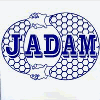
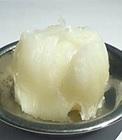
JADAM
Portugal
Vaseline is a common brand of petroleum jelly-based products thus, the word "Vaseline" is used as generic for petroleum jelly, which is also named as petrolatum, white petrolatum, soft paraffin, or multi-hydrocarbon Uses: As a petrolatum product, Vaseline is used as a topical moisturizer, Skin and hair care, Medical treatment, Skin lubrication, Mechanical, barrier functions, Surface cleansing Industries: Household chemicals, Adhesives, oils, greases, Pharmaceutical industry Properties: CAS number 8009-03-8 WE number 232-373-2 Customs tariff code 271210 Melting / freezing point 30 - 60°C Relative density 0,83 g/cm3 @90°C
Request for a quote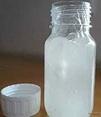
JADAM
Portugal
SLES 70 Sodium laureth sulfate (SLES), an accepted contraction of sodium lauryl ether sulfate (SLES), also called sodium alkylethersulfate, is an anionic detergent and surfactant found in many personal care products (soaps, shampoos, toothpaste, etc.) for industrial uses, SLES is an inexpensive and very effective foaming agent Its chemical formula is CH3(CH2)11(OCH2CH2)nOSO3Na Industries: Household chemicals, Cosmetic industry Properties: CAS number,9004-82-4 (n=5) pH 7,0 – 10,0 (5% @20°C) Melting / freezing point <5°C Boiling point range >100°C Molar mass Variable, typically around 421 g/mol UNII 410Q7WN1BX
Request for a quote
JADAM
Portugal
Linear AlkylbenzeneSulphonic Acid is a sticky, highly viscous brown liquid. This highly dense liquid does not have a pungent smell. In temperatures lower than 10 degree Celsius, the chemical solidifies. Salts or esters of sulfonic acids are called sulfonates Applications: Detergents and surfactants, Dyes , Acid catalysts , Drugs Industries: Household chemicals, Adhesives, oils, greases, Resins, plastics, polyurethanes Properties: CAS number 5329-14-6 WE number 226-218-8 Chemical formula H2NSO3H Molar mass 97,09 g/mol Customs tariff code 28111980 ADR UN2967 Melting / freezing point 205°C Relative density 2,15 g/cm3 @25°C Solubility in water 181,4 g/l @20°C"
Request for a quote
JADAM
Portugal
Citric acid monohydrate HOC(COOH)(CH2COOH)2·H2O is a tricarboxylic acid with one water group is a colorless weak organic acid It occurs naturally in citrus fruits It is used as an excipient in pharmaceutical preparations due to its antioxidant properties It maintains stability of active ingredients (preservative agent) Uses: Food and drink, as it is one of the stronger edible acids, it is used as a flavoring and preservative in food and beverages Cleaning and chelating agent, as it is an excellent chelating agent, it used to remove and discourage the buildup of limescale from boilers and evaporators Industries: Household chemicals, Cosmetic industry, Adhesives, oils, greases, Horticulture, Food industry, Feed industry Properties: CAS number 5949-29-1 WE number 611-842-9 Chemical formula C6H8O7·H2O Molar mass 210,14 g/mol Customs tariff code 29181400 pH 1,7 (100 g/l) Melting / freezing point 153°C (1013 hPa) Relative density 1,665 g/cm3 @20°C Solubility in water 590 g/l @20°C
Request for a quote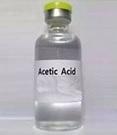
JADAM
Portugal
Acetic Acid 50%, 80% and 99% systematically named ethanoic acid, is an acidic, colourless liquid, organic compound with the chemical formula (CH3COOH) Vinegar is at least 4% acetic acid by volume, making acetic acid the main component of vinegar apart from water and trace elements It is an important chemical reagent, used primarily in the production of cellulose acetate for photographic film, polyvinyl acetate for wood glue, and synthetic fibres and fabrics In households, diluted acetic acid is often used in descaling agents In the food industry, it used as an acidity regulator and as a condiment Industries: Household chemicals, Fertilizers Properties: CAS number 64-19-7 WE number 200-580-7 Chemical formula CH3COOH Molar mass 60,05 g/mol Customs tariff code 29152100 ADR UN2789 pH <1 Melting / freezing point -20°C (1013 hPa) Boiling point range 92°C (1013hPa) Relative density 1,057 g/cm3 @25°C Solubility in water 602,9 g/l/ @25°C
Request for a quote
JADAM
Portugal
Nitric acid (HNO₃) is a colorless liquid with yellow or red fumes due to decomposition into oxides of nitrogen It is a highly corrosive mineral acid with an acrid odor most commercially available nitric acid has a concentration of 68% in water, when the solution contains more than 86% HNO3, it is referred to as fuming nitric acid Industries: Household chemicals, Fertilizers, Adhesives, oils, greases, Horticulture Precursor to organic nitrogen compounds Use as an oxidant in nylon industry Metal processing,Woodworking ,Etchant and cleaning agent Properties: CAS number 7697-37-2 WE number 231-714-2 Chemical formula HNO3 Molar mass 63,01 g/mol Customs tariff code 28080000 ADR UN2031 pH <1 Melting / freezing point -18°C (1013 hPa) Boiling point / range 117°C (1013 hPa) Relative density 1,31 g/cm3 @20°C Solubility in water 500 g/l @20°C
Request for a quote
JADAM
Portugal
Phosphoric acid (orthophosphoric acid, monophosphoric acid) is a colorless, odorless phosphorus-containing solid, and inorganic compound with the chemical formula H3PO4 It is commonly encountered as an 85% aqueous solution, which is a colourless, odourless, and non-volatile syrupy liquid, it is a major industrial chemical, being a component of many fertilizers. Applications: in anti-rust treatment by phosphate conversion coating, iron oxidation prevention by Parkerization process, in phosphoric acid fuel cells in activated carbon production, pH adjuster in cosmetics and skin-care Industries: Household chemicals, Fertilizers, Adhesives, oils, greases, Horticulture, Food industry, Feed industry Properties: CAS number 7664-38-2 WE number 231-633-2 Chemical formula H3PO4 Molar mass 97,995 g/mol Customs tariff code 28092000 ADR UN1805 pH <1 Melting / freezing point - 17°C Boiling point 135°C Relative density 1,5788 g/cm3 @15°C Solubility in water >1000 g/l @20°C
Request for a quote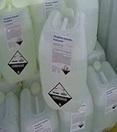
JADAM
Portugal
Sulfuric Acid 98% (H2S04) known in antiquity as oil of vitriol, is a mineral acid composed of the elements sulfur, oxygen, and hydrogen, with the molecular formula H2SO4 It is a colorless, odorless, and viscous liquid that is miscible with water Pure sulfuric acid does not occur naturally due to its strong affinity to water vapor; it is hygroscopic and readily absorbs water vapor from the air Concentrated sulfuric acid is highly corrosive towards other materials, from rocks to metals, it is an oxidant with powerful dehydrating properties Industries: Household chemicals, Fertilizers, Adhesives, oils, greases, Horticulture, Batteries Properties: CAS number 7664-93-9 WE number 231-639-5 Chemical formula H2SO4 Molar mass 98,08 g/mol Customs tariff code 28070000 ADR UN 1830, 8, II pH 0,3 (49 g H2S04/1000 ml H2O @25°C) Melting / freezing point +1,8°C (98.5 %), -12.6°C (96 %), -27°C (93 %) Boiling point range + 275°C ± 5°C (100%) Relative density 1,8144-1,8305 kg/l (90-100%)
Request for a quote
JADAM
Portugal
White spirit, mineral spirits, or mineral turpentine, turpentine substitute, petroleum spirits, is a petroleum-derived clear liquid used as a common organic solvent in painting White spirit is often used as a paint thinner The word "mineral" in "mineral spirits" or "mineral turpentine" is to distinguish it from distilled spirits (alcoholic beverages) or from true turpentine (distilled tree resin) It is insoluble in water and used as an extraction solvent, as a cleaning solvent, as a degreasing solvent and as a solvent in aerosols, paints, lacquers, varnishes, and asphalt products Uses: Degreasing and lubricating, Solvent and paint thinner,Portable stoves Industries: Household chemicals,Painting materials,Hydrocarbon solvents,Dry cleaning Properties: Initial boiling point (IBP) 145–174°C Final boiling point (IBP+21)°C Average relative molecular mass 150 Relative density 0.780 @15°C Flash point 31–54°C Solubility in water (w) < 0.1% CAS Number 64741-92-0 EC Number 232-489-3 UN no. 1268
Request for a quote
JADAM
Portugal
Di-ammonium phosphate (DAP), di-ammonium hydrogen phosphate, chemical formula (NH4)2(HPO4) is one of a series of water-soluble ammonium phosphate salts that can be produced when ammonia reacts with phosphoric acid It is brownish yellow pale granules with a slight ammonia odor Diammonium phosphate (DAP) is the world’s most widely used phosphorus (P) fertilizer. It is made from two common constituents in the fertilizer industry and it is popular because of its relatively high nutrient content and its excellent physical properties. Applications: DAP is used as a fertilizer, yeast nutrient in winemaking and mead-making, purifying sugar, wool industry , Agriculture industry Properties: CAS Number,7783-28-0 EC Number 231-987-8 HS Code 31053000 Chemical formula (NH4)2HPO4 Molar mass 132.06 g/mol Density,1.619 g/cm3 Melting point 155°C @428 K Solubility in water 57.5 g/100 mL @10°C, 106.7 g/100 mL @70°C PH 8
Request for a quoteAgent/ Representative
Lisbon Estrada de Alfragide Lote 107 Ed. A2
2610-008 Lisbon - Portugal